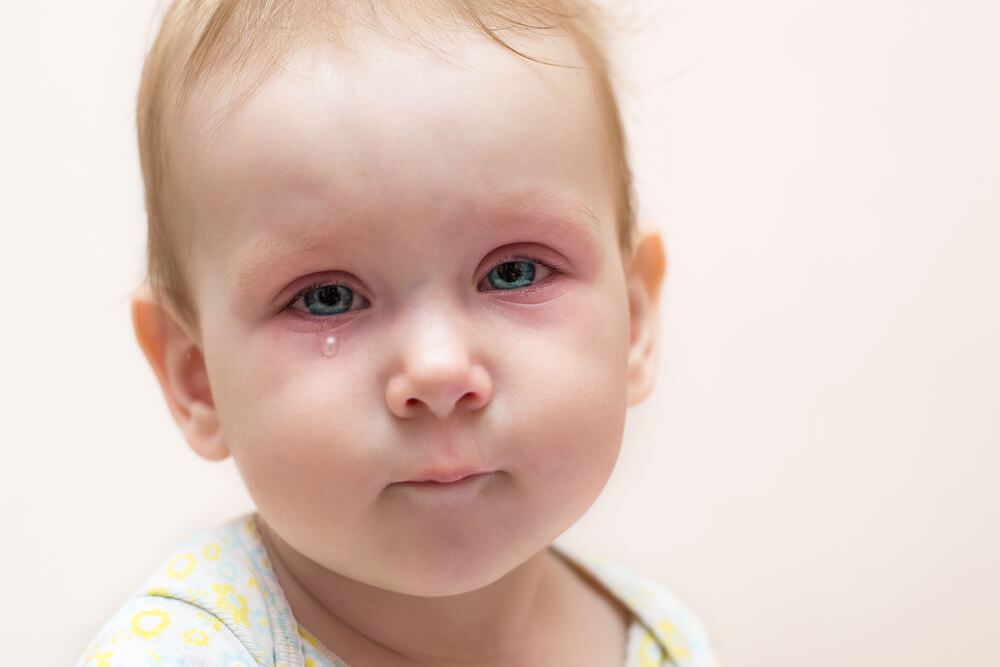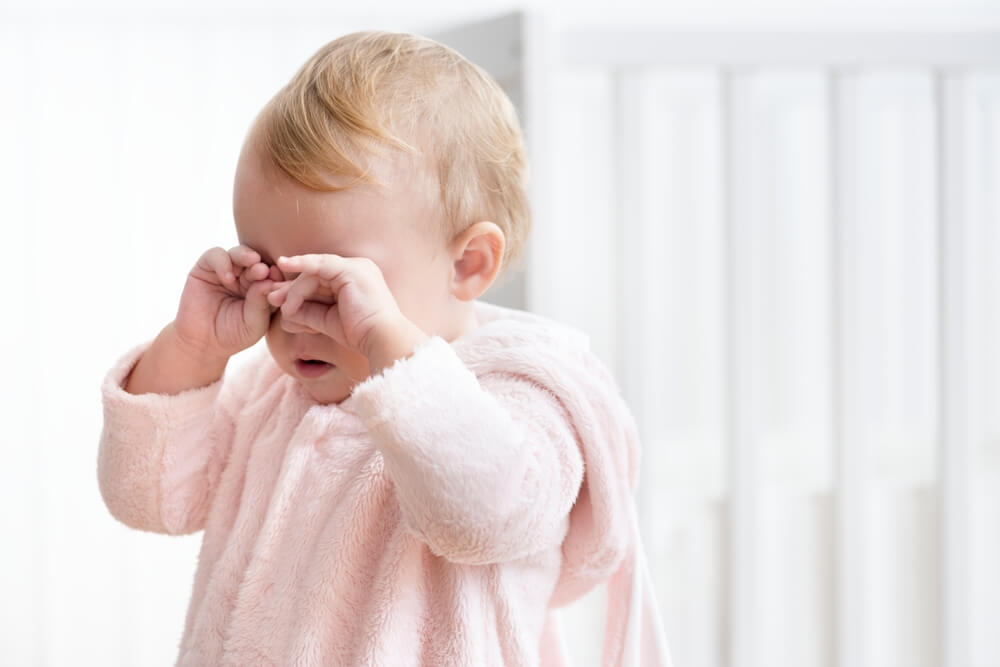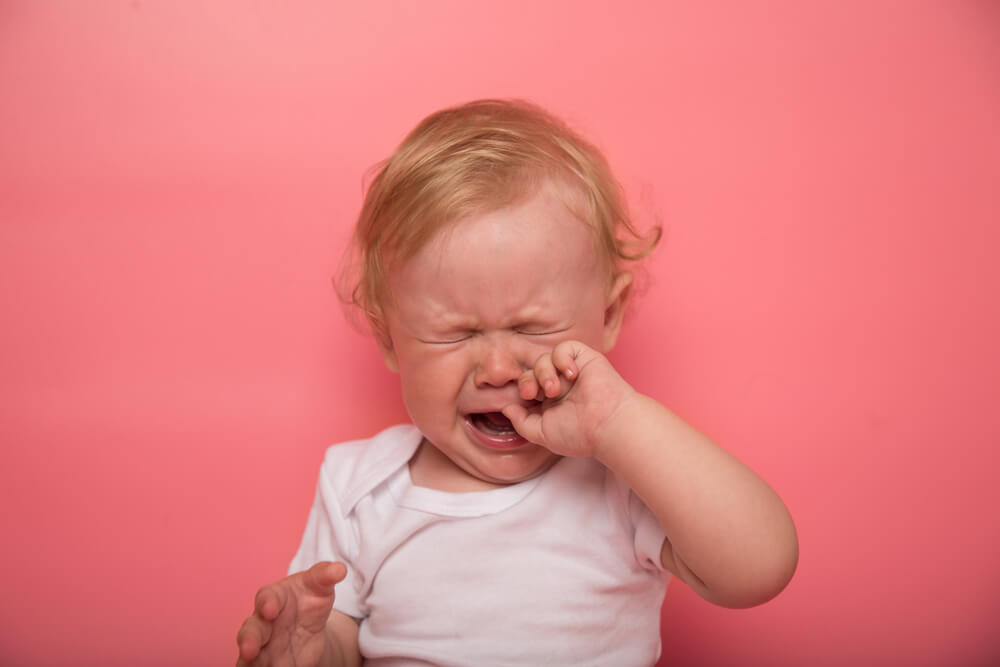Pink eye is an eye infection common in young children, although teenagers and adults can also get it. Known medically as conjunctivitis, pink eye is an inflammation of the white portions of one or both eyes and inner eyelids or the conjunctiva. When first seeing it in their children, many parents may wonder, “how long does pink eye last?”
Pink eye is not always infectious. Among the types of noninfectious pink eye are allergic conjunctivitis and irritant conjunctivitis. Allergic conjunctivitis is a symptom of some other allergy and is more prevalent in toddlers with existing allergies, such as hay fever. Irritant conjunctivitis can occur in any toddler who encounters something that irritates the eyes.
Pink Eye Causes
If you’re wondering “how long does pink eye last,” you’re also probably curious about its causes. Many of the same viruses and bacteria that cause other common infections like colds, sore throats, sinus infections, and ear infections can cause infectious pink eye. Even the same bacteria responsible for two sexually transmitted diseases, gonorrhea and chlamydia, could cause pink eye.
As for noninfectious pink eye, triggers for allergic conjunctivitis typically relate to the affected toddler’s preexisting allergic conditions, which may include dust mites, animal dander, grass, and ragweed pollen. Possible triggers for irritant conjunctivitis include chlorine in swimming pools and air pollution.
Early Stage Pink Eye Symptoms

Pink eye can occur in one or both eyes. The most common symptom of conjunctivitis is a red or pinkish color to the whites of the eye, hence the common name for the condition of “pink eye.” Another typical early stage pink eye symptom is eye discomfort, which toddlers often describe as feeling like they have sand in their eyes. In many cases, the conjunctiva or eyelids may swell, causing possible pain and light sensitivity. In cases of allergic pink eye, other typical early-stage pink eye symptoms include itchy and watery eyes.
While a breakout of pink eye generally looks much worse than it is, it isn’t typically severe. Still, parents should monitor it to make sure that it doesn’t get worse or persist longer than it should. In some cases, a Port St. Lucie doctor’s intervention or treatment may be necessary.
Is Pink Eye Contagious?
You may also be wondering, “is pink eye contagious?” To know whether a particular toddler’s case of pink eye is contagious, you need to know what type of pink eye it is or its cause. Infectious pink eye, meaning pink eye caused by a virus or bacteria, is contagious. Pink eye caused by bacteria becomes contagious the moment symptoms first appear and remains infectious for as long as discharge comes from the eye or until 24 hours after starting antibiotic treatment.
Pink eye caused by a virus can be contagious from the moment the toddler gets infected, even before symptoms occur. Viral pink eye can, then, remain contagious until symptoms disappear.
To pass along the virus or bacteria responsible for infectious conjunctivitis, a toddler has to touch their eye and then touch another toddler or an object another toddler then touches. Kids can also pass pink eye from one of their eyes to the other by touching or rubbing the infected eye and then the uninfected eye without first sufficiently washing their hands.
Pink eye can also transmit when an infected child coughs or sneezes and can also pass from toddler to toddler when they swim together in contaminated water or share towels exposed to the trigger infection.
Because of how easy it is to pass along the viruses and bacteria responsible for infectious conjunctivitis, it’s common for a single case to spread into a breakout throughout entire Port St. Lucie preschools, playgrounds, and public swimming pools.
Is pink eye contagious in allergic or irritant form? In these cases, no, pink eye is not transferable.
Pink Eye Diagnosis
Upon noticing a toddler with signs that match the symptoms of pink eye, you may reasonably guess that they might have pink eye. However, there are several other conditions that a toddler might have that present many of the same symptoms as pink eye. Therefore, the only way to properly diagnose pink eye is by taking your toddler to see a clinic that provides pediatrics in Port St. Lucie, where they can see a medical professional qualified to give a proper medical diagnosis.
When to Call a Port St. Lucie Doctor
If a toddler complains of intense eye pain, light sensitivity, changes in eyesight, or exhibits visible swelling around the eyes, visit a doctor as soon as possible. Until the doctor diagnoses the toddler’s condition and provides proper treatment and a prognosis for recovery, you should remove your child from school and keep them home from other activities.
How long does pink eye last? If a toddler’s untreated pink eye lasts longer than two to three days, call the doctor. Likewise, if, after beginning treatment, a toddler’s conjunctivitis persists for more than two to three days, contact the doctor again. If symptoms intensify or spread to other parts of the eye, face, or rest of the body, call your Port St. Lucie pediatrician as well.
Conjunctivitis Treatment
Sometimes, pink eye symptoms will disappear after a while, and the condition often clears up without any treatment. In other cases, however, the toddler may need to see a Port St. Lucie doctor for conjunctivitis treatment. The typical conjunctivitis treatment for pink eye is a round of antibiotics, often in the form of antibiotic ointment or eye drops.
You can also treat allergic conjunctivitis with doctor-prescribed anti-allergy medication. This may come in the form of eye drops, pills, or liquid. You can treat the symptoms of irritant conjunctivitis, but you can only eliminate the condition by removing the child from the source of the irritation.
Ways That Parents Can Help
Parents can relieve some of the itching, pain, and swelling associated with pink eye and help make the toddler more comfortable by placing a warm or cool compress over their eyes.
Parents can also alleviate pink eye discomfort by removing dried and crusted discharge from around the eyes. To do so, gently wipe the edges of the eye with a cotton ball or gauze pad dipped in warm water. This can be especially beneficial in the mornings when these particular symptoms are most prevalent.
Giving the toddler ibuprofen or acetaminophen can also help relieve a toddler’s discomfort from pink eye, but be sure to read the medicine’s instructions carefully to make sure you give your child the proper dose.
Pink Eye Prevention

To prevent your toddler from catching or spreading conjunctivitis, make sure your children avoid touching their faces and wash their hands with soap and warm water frequently. If another toddler, such as one in your child’s class or playground, develops pink eye, isolate your toddler from that child and any other toddler who also comes in close contact with that child.
Instruct your child never to share the following items with any other child:
- Tissues
- Eye drops
- Washcloths
- Pillowcases
- Towels
Be sure that you also wash your own hands well after coming into contact with an infected toddler’s eyes, and safely dispose of any cotton or gauze that touches the toddler’s eyes immediately after use.
If you need to get a pink eye diagnosis or pink eye treatment for your toddler, PEMC Florida in Port St. Lucie, Florida, can help, so contact us right away.


